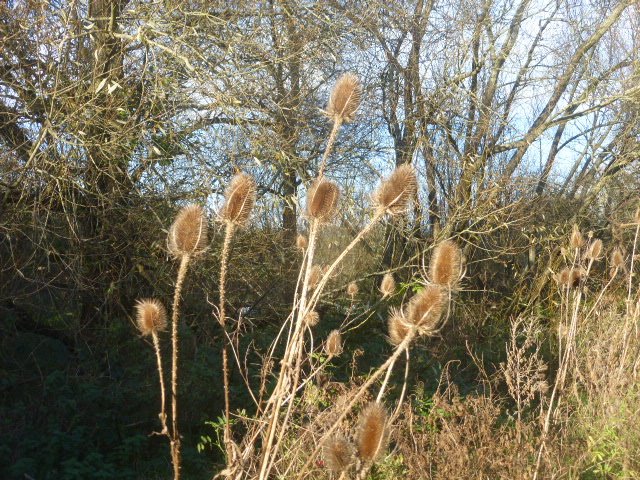An Autumnal Jumble
Two days ago, I received this photograph from the North Wales section of Team Terroir. The accompanying message read “Very late foxglove … maybe another blog on late flowering plants?”
Three journeys were precipitated by this idea. The first was a visit to The Moors (English Team Terroir’s local green-escape, and frequently featured in this blog). The second and third journeys circumnavigated Terroir’s gardens (one in north Wales and one in southern England). Like our modern climate, the results were confusing.
Let’s start with the gardens. Both had been frost free until the start of November. Both are fairly sheltered. Both have fairly similar elevations (the Welsh garden at 80 m and the English at 100m). Of course the Welsh garden is further north than the English garden, but also considerably further west, and only 20 miles from the sea. You also need to know that the Welsh team are the better gardeners!
Here is a sample of the late flowers in the Gardd Gymreig.
You may say that it is hardly surprising to have nerines or fuchsias flowering in the autumn, but in this garden, all the above have been an unexpected, if welcome addition, to the November display.
The English garden is less floriferous but the message is the same: we are surprised to see you.
The hydrangea heads are normally well coloured until after Christmas, but it is unusual to get a fresh bloom in November. The Salvia Hot Lips is technically a cheat, as it is cheering up the front garden of a neighbour, but the element of surprise is the same, although the profusion of flowers has probably been helped by the prodigious quantities of rain which have fallen recently.
Assuming that there would be an equally surprising range of flowers in bloom along the path through The Moors, Terroir set off in anticipation of a stimulating stroll. Unfortunately this assumption was utterly erroneous, and the herbaceous colour palette was based almost entirely on an array of green/brown leaves and seed heads. After some searching, a few late flowers were spotted lurking in the undergrowth (see below), and there may have been others even better hidden. Indeed, on turning back to take a better photograph of the single red campion flower, I was totally unable to find it again. Why this contrast with the exotics of the garden? We would appreciate comments and suggestions in the box at the end of this blog. If you can’t find it, click on ‘read more’ and scroll back down to fill in your thoughts.
The walk was not without interest, however. The variety of seed heads and berries provided a varied and sculptural and/or colourful display.
But it was the trees which were most varied and unpredictable. Considering that it is already early November, many seem slow to lose their leaves.
The English oaks were still in full leaf with plenty of late summer greens and only a few turning to autumnal yellow.
The American oaks which someone has planted here (probably Red oaks, see below left), were anything but red, having already lost many leaves whilst of a pleasant but unspectacular yellow/brown colour. The equally non-native Norway maple (second from right), which usually puts on a spectacular show of brilliant yellow at a bend in the path, is still green; the native field maple (below right) has gone totally autumnal.
The willows and poplars are a mixed bunch. The poplars (see below, upper row, left and centre) are either bare or have retained their upper most leaves. The sallows (upper row right) are still late summer green but their long leaved, weeping, cousins (lower row and immortalised in William Morris’ willow bough design) seem to have lost the plot completely .
The self-seeded forest of alders is largely denuded of leaves, but those with space to expand (below left) still retain their summer leafy glory. The dogwoods just seem to be confused.
Down by the laid hedge, the hazel has regrown vigorously and retained the enormous leaves which the wet weather seems to have encouraged. A neighbouring blackthorn , also in full leaf (below right), is clinging to a last remaining sloe. As with the holly, this year’s cornucopia of fruit has already been eaten.
Sadly, the chaos which is autumn 2021 feels like a metaphor for COP 26 in Glasgow. Already we have lost our ash trees (below left and centre: a dying ash and the lesion caused by ash die back disease). Is it too late to retain the stately beech (below right)?













































